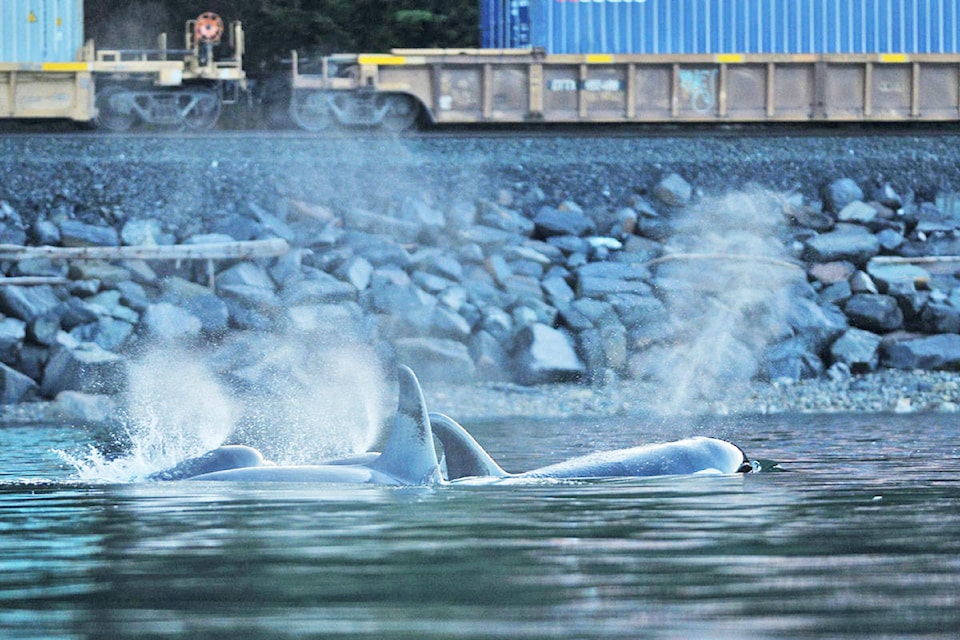While the northern resident killer whales have yet to be seen in the Prince Rupert harbour this year, marine researchers have seen an increase in their numbers.
On May 11, the Pacific division of Fisheries and Oceans Canada tweeted the latest statistics for the pod populations.
The 2017 Northern Resident #KillerWhale numbers are in – this population has
— DFO Pacific (@DFO_Pacific) May 11, 2018
grown to a maximum of 309 whales! This number includes 5 confirmed whale deaths and 10 calves born. Find out more: https://t.co/PA1zFgK4Ii pic.twitter.com/vp1waWvOlo
“The 2017 Northern Resident #KillerWhale numbers are in – this population has grown to a maximum of 309 whales! This number includes 5 confirmed whale deaths and 10 calves born,” DFO’s tweet reads.
In the 1970s, when DFO launched its study of the northern resident killer whales, they totalled 120 whales.
“The numbers have more than doubled since the beginning of the study. They took a bit of a downturn in the late 1990s, during a time when chinook salmon were particularly scarce in some poor salmon years,” Lance Barrett-Lennard, the director of the marine mammal program at the Vancouver Aquarium, said.
“It’s kind of a success story, that particular population. We’re really happy to see that trend continuing.”
Killer whales usually give birth every five years, and a high infant mortality rate is a factor of low population numbers. Marine mammal researchers study the difference between annual births and deaths, and the three per cent birthrate in the 2017 study shows a healthy rate. The death rate was particularly low last year, which bodes well for the population of whales.
READ MORE: Orca found at Copper Bay was a northern resident: DFO
The latest statistics are the highest recorded number for the northern resident killer whales. Barrett-Lennard said researchers aren’t sure why the population has grown so much, but it looks as though the numbers are rebounding.
The most likely theory, said Barrett-Lennard, is the killer whales were killed by humans.
“People generally didn’t like killer whales through most of the 1900s until the last 25, 30 years. Fishermen really didn’t like them, they saw them as competitors for fish, they saw them to be dangerous,” he said. “It’s very easy to kill a killer whale with a rifle. If you had fishermen shooting at them, it wouldn’t take many deaths a year to really drive the population down.”
Since then, public opinion of the species has changed, and people from all over come to B.C.’s coasts to whale watch.
When the study of the northern resident killer whales began in the 70s, the most reliable place to spot a killer whale off the coast of B.C. was in the Johnstone Strait. Like the numbers of the pod, that too has changed.
“We live in fortunate times in a way, if we’re interested in animals like this and killer whales in particular because sightings have become much more common along the whole coast,” Barrett-Lennard said. “In particular, in Prince Rupert, we’ve had a fairly consistent — until this year — visitations of the northern resident pod right into the harbour. It impacts people in that direct way, they have a much better chance of seeing them now.”
READ and WATCH MORE: New whale rescue equipment comes to Rupert
keili.bartlett@thenorthernview.com
Like us on Facebook and follow us on Twitter
